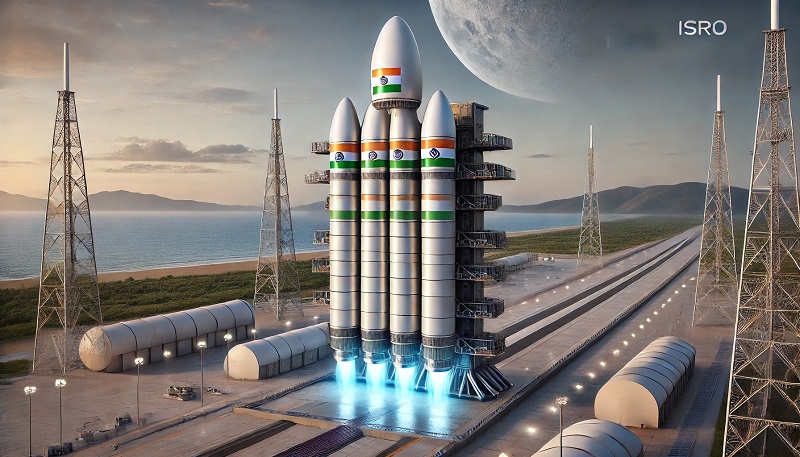ISRO to Develop High-Capacity, Cost-Efficient Reusable Rocket to Fuel Lunar and Space Station Goals
In a major stride toward enhancing India’s space capabilities, the Union Cabinet, led by Prime Minister Narendra Modi, has greenlit the development of the Next Generation Launch Vehicle (NGLV). This cutting-edge, reusable rocket is expected to play a pivotal role in India’s ambitious plans, including the creation of the Bharatiya Antariksh Station and a manned moon landing by 2040.

The NGLV promises to deliver a threefold increase in payload capacity compared to existing launch vehicles, while keeping costs at just 1.5 times the current level. Designed to lift up to 30 tonnes into Low Earth Orbit (LEO) with a reusable first stage, the NGLV will also incorporate modular, eco-friendly propulsion systems. The project aims to reduce the overall cost of space access and expand India’s presence in the global commercial satellite market.
India’s current space transport fleet, which includes the PSLV, GSLV, LVM3, and SSLV, has enabled the country to launch satellites weighing up to 10 tonnes into LEO and 4 tonnes into Geo-Synchronous Transfer Orbit (GTO). However, as India enters the “Amrit Kaal,” a critical phase for its space program, there is a growing demand for advanced, human-rated rockets with higher payload capacities and reusability, driving the development of the NGLV.
With a budget allocation of ₹8,240 crore, the NGLV project will see three key demonstration flights (D1, D2, and D3) over the next eight years. Indian industries are expected to play a significant role, investing in manufacturing capacity from the onset and ensuring a smooth transition to operational launch services.
Towards the Bharatiya Antariksh Station and Beyond
The NGLV’s development is not only a leap toward India’s first space station, but also a cornerstone for future human spaceflight, lunar exploration, and interplanetary missions. The vehicle is designed to support national and commercial ventures, such as deploying communication and Earth observation satellite constellations, boosting India’s space ecosystem and enhancing its global standing in the space industry.
By advancing its launch capabilities, India is poised to benefit from a thriving space economy, fostering innovations that will fuel both national ambitions and international collaborations.






